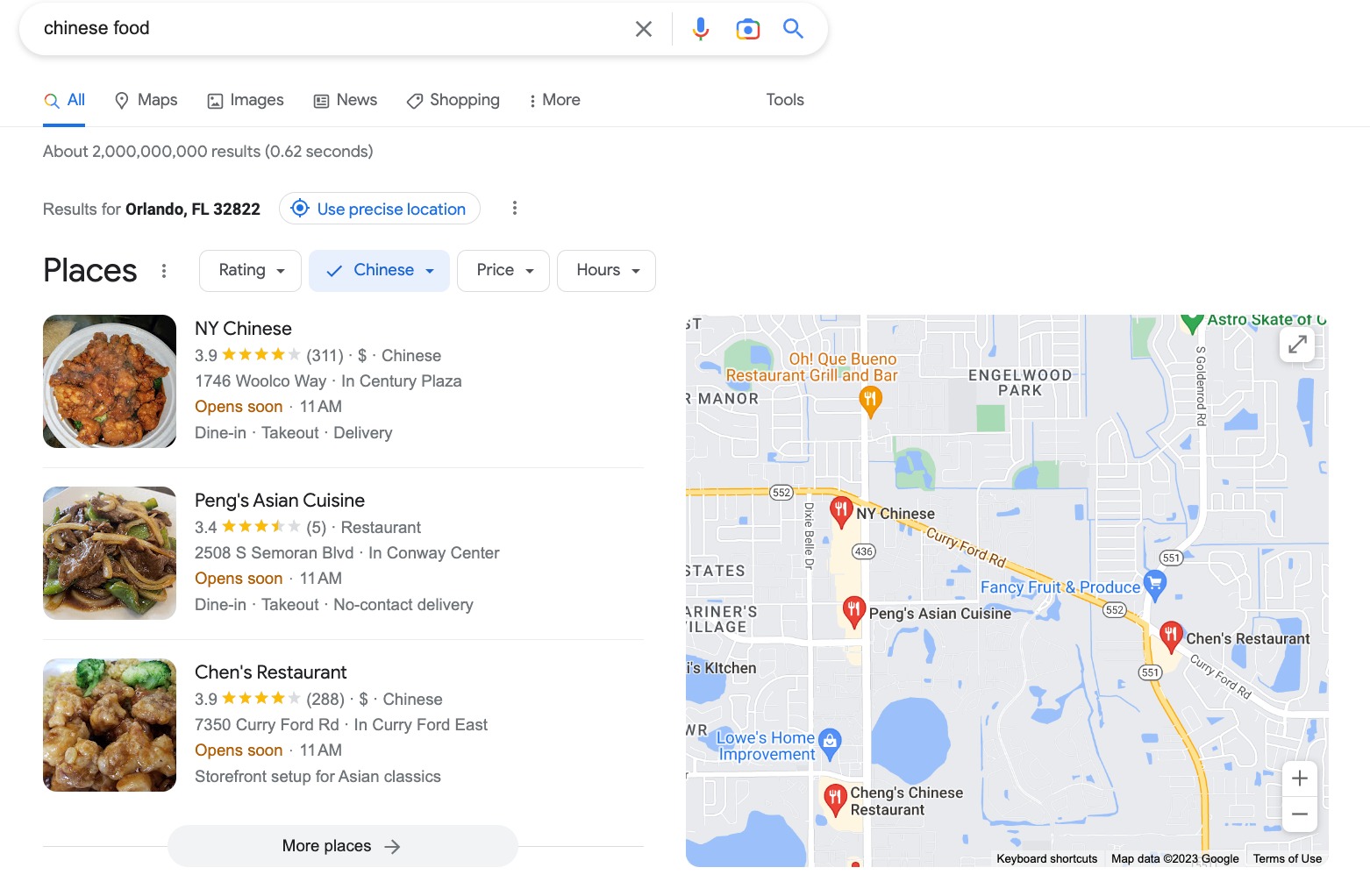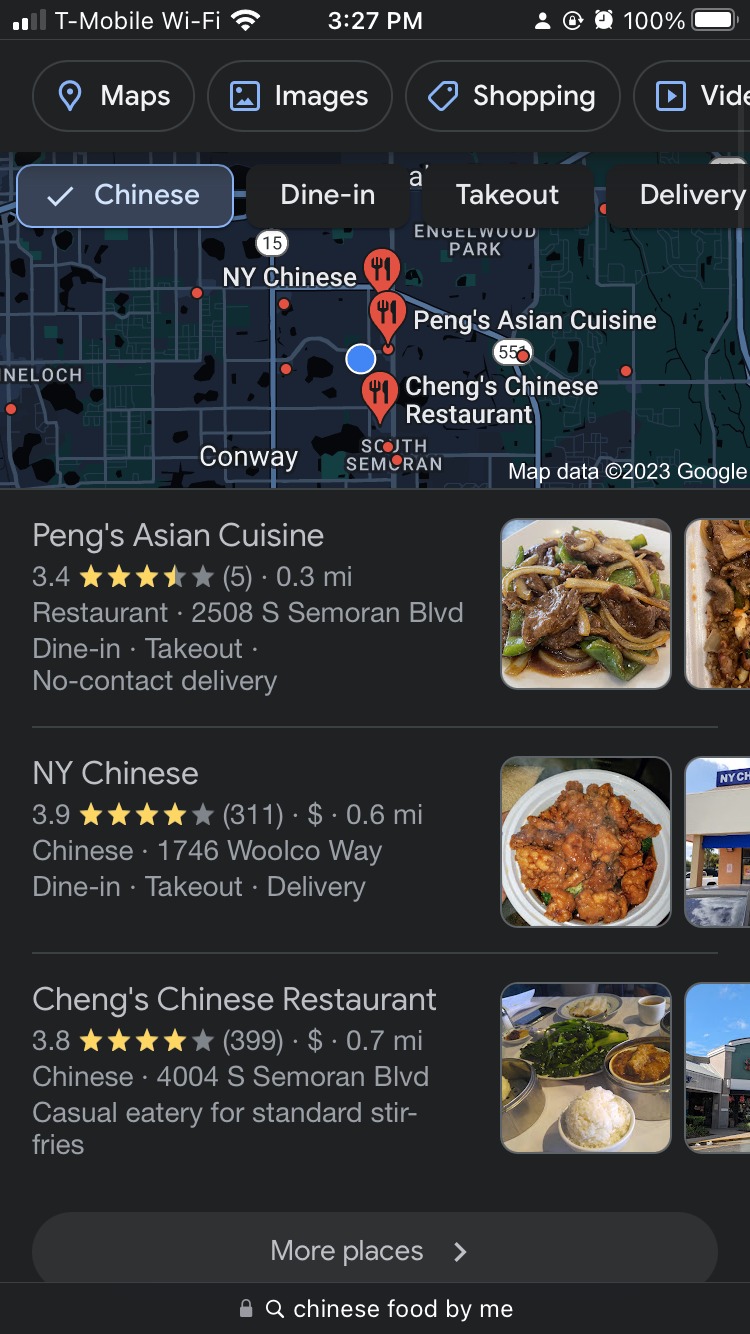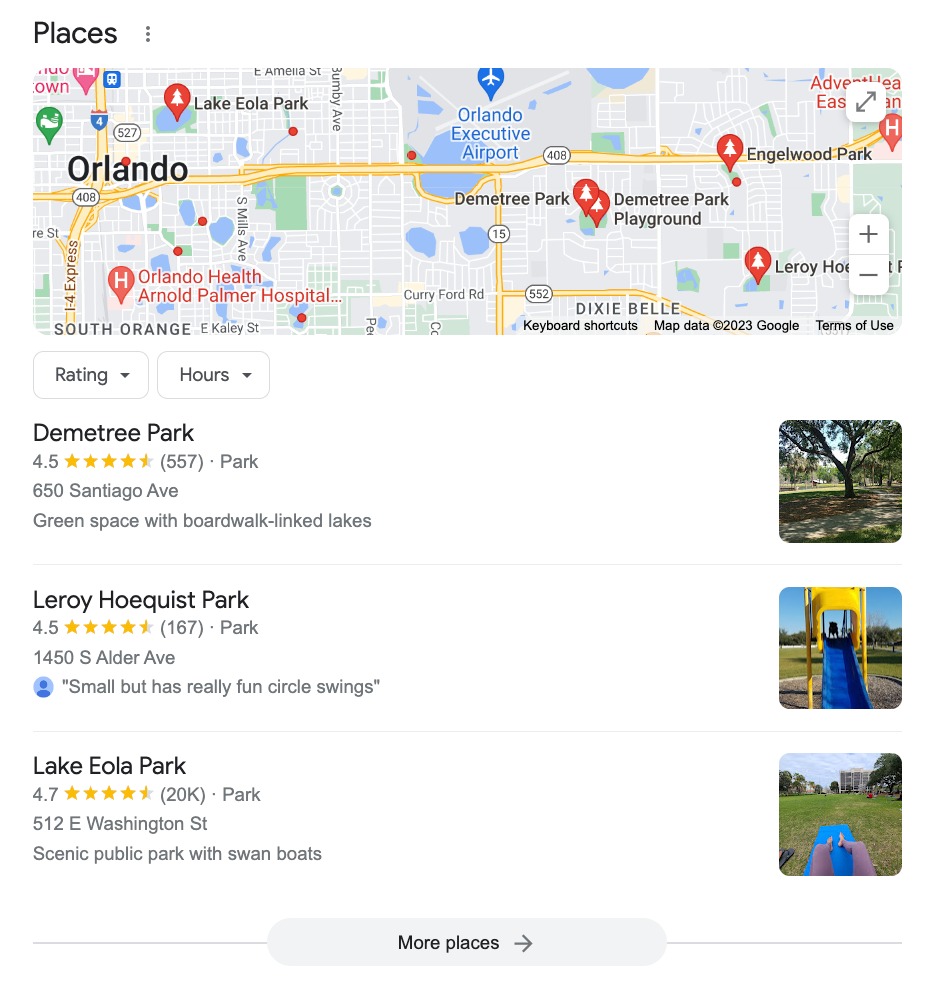The local pack SERP feature (aka the Google map pack or snack pack) shows location-specific results related to a query. Local packs tend to show up for searches with commercial intent.
Also, Google uses the location of the searcher to determine the results even if they don’t specify a location. For instance, if you search for “Chinese food” on a desktop computer you’ll see something like this:

On mobile, that could look like this:

Though, a local pack may show up for any location-specific query. Here’s a result for “parks in Orlando.”

You’ll usually find a local pack at the top of a SERP above any ads, but sometimes you’ll find them below the ads.
Local packs may show local search ads above the organic results from time to time, but traditionally include:
- A map of the area with locations and pins
- A rating for each location
- Three search results
- The address
- A button to see more results
Sometimes they’ll show more information about the website or directions to the featured place, which Google finds from its Google Business Profile.
How to Rank for a Local Pack SERP Feature
Local packs are different from other SERP features because the algorithm that decides which sites get to be in a local pack isn’t the same as Google’s regular one.
The local search algorithm decides to put somewhere in a local map pack based on three factors:
- Relevance: how relevant the result is to a searcher’s intent
- Prominence: how popular a business is
- Distance: how far each result is from the search query
Google figures out each largely based on a site’s off-page SEO. What other sites say about a place can affect placement in a local pack—like backlinks, directories, and reviews. Google offers these tips about improving a site for local pack placement.
- Improve regular organic search positions on the SERP through keyword research
- Optimize your Google Business Profile with the most recent and relevant information (address, phone number, category, and attributes)
- Add photos to your Google Business Profile and encourage visitors/customers to do the same
- Manage inaccurate information listed in directories
- Add schema markup to your site to help search engines understand what a business does and where it’s located
- Get good reviews and ratings
- Always respond to reviews
There isn’t a foolproof way to snag a place in the local map pack. But understanding how local SEO works can boost your chances.
How Semrush Collects Data About Local Map Packs
When we scan a keyword’s SERP, we identify whether or not a local pack is present anywhere on the results page.
- If a local pack is present on the initial results page, but the domain you entered doesn’t appear for a local pack: its icon will appear gray in the SERP Features (SF) column.
- If the queried domain ranks for a local pack: you’ll see a stand-alone blue icon listed in the Positions column. This will allow you to see estimated traffic coming from this SERP feature. You’ll also see another row in the same table with the URL’s organic ranking and estimated traffic.
Note: You can track your business's presence in local packs on a daily basis by setting up a Position Tracking campaign with your specific set of target keywords.